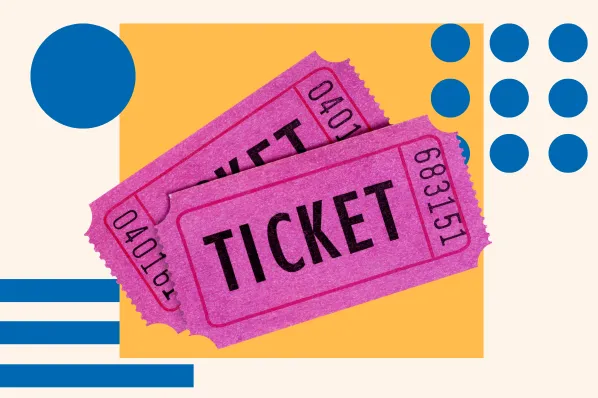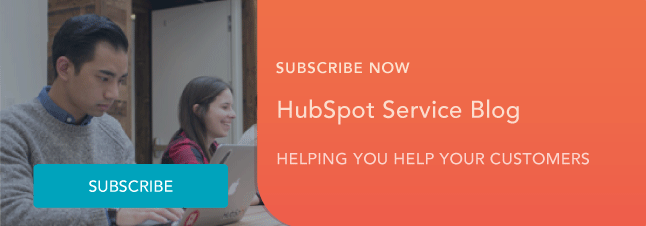Each customer interaction is an opportunity to build relationships, understand where your product can improve, and ensure those customers renew.
In this article, we'll cover the key functions of customer support and how to implement them successfully.
Table of Contents
- What is customer support?
- The Roles and Structure of Customer Support
- Critical Components of a SaaS Support Strategy
- Best Practices for SaaS Customer Support
- SaaS Customer Support Examples
What is customer support?
Customer support involves helping your customers when they have problems using your platform.
Much to their detriment, many companies fail to provide effective customer support. One study found that 7 out of 10 customers stopped doing business with an organization because of poor customer support.
With so much on the line, having the basics down is vital.
How a team accomplishes the basics defines how effectively you can help your customers. Your team needs to be able to provide the right help at the right time.
They need the investigative abilities to identify the root causes of issues. They'll also need the technical skills to fix problems for the customer.
For a complex product, you need people who know the product inside and out.
More than that, you need a customer support setup that truly cares about championing the customer. That includes a company culture that prioritizes each interaction.
Customer Support, Success, and Service
Let's go through the differences between customer success, service, and support.
- Customer support: The act and process of tending to customer needs. This involves being there when they need you most.
- Customer service: The act of attending to customer needs before a problem occurs. This involves being proactive and reaching out to customers with benefits.
- Customer success: A culture defined by creating the most value for the customer at any given time, in any scenario.
To provide exceptional customer support, you should incorporate all three methods.
The Roles and Structure of Customer Support
A typical customer support structure will use a tiered system of specialization.
A generalist versus specialist customer support team structure is common. These two types of support help keep the process organized.
You'll have a customer support funnel that can appropriately use the different forms of expertise on the support team.
General issues can be handled quickly. Experts will deal with more complex challenges. This efficiently provides tailored help to the customer.
Level One
Many support tickets that come through to the team will be straightforward.
For problems like these, you might have a dedicated team of first responders. This is your level-one support.
They could tackle questions about features, billing, or general confusion. Even the best-designed products can't make these problems disappear entirely, so it's helpful to have a person to handle these issues.
These level-one support reps filter tickets. They fix the ones they're able to solve. But sometimes, the problem is an issue they are unable to resolve.
Level Two
At this point, the level one support rep can pass responsibility to a specialized role.
This role can be considered "level two." These reps have further specialization depending on your company and its size.
For instance, your level two might be a customer support engineer. These people solve technical issues for customers and investigate why something isn't working.
The customer support engineer acts as a detective. They discuss the issue in depth with the customer and ask the customer for technical information.
They may even get on a video call. The customer may screen share so that the engineer can peer into the inner workings of the client's browser to identify problems.
The customer support engineer can either fix the problem for the customer or report to the development team to tackle the issue.
You can learn more about structuring and organizing your customer team in your SaaS business' startup stage here.
Critical Components of a SaaS Support Strategy
While your customers' problems vary, customer support strategies are fairly consistent. Every SaaS organization needs a few immutable aspects to any support strategy.
Prioritized Channels for Contact
Customer support has come a long way from calling a toll-free line and sitting on hold listening to Beethoven.
Some customers still prefer to use the phone, but others wish to email the company. Some customers will mention you on social media or just fill out a support form.
Whichever your customers prefer, ensure channels are available and routed into your ticketing system.
Support Ticketing System
Use a dedicated help desk support software for easy ticket processing.
Having a lot of customers is both a good and bad problem to have. It's good because it drives growth. On the downside, a huge volume of requests can overwhelm a support team.
Having a platform in place that can track what issues were submitted, by whom, when, and for what is essential. You can make sure that no requests are lost in the course of doing business.
Automated Routing System
When there is a huge volume of requests, you'll need to get tickets assigned to the correct team member.
It's crucial to have a structured support process to guide the flow of tickets. This system should account for the specialization of labor so that tasks can be resolved efficiently.
For instance, is a particular issue a tier-one support issue or actually a sales request? Once those tickets have entered your system, they must get to the right team member without someone having to assign them manually.
Keep in mind: No automation will function properly if you can't leverage the data in your systems.
Clean Customer Data
Data hygiene issues are huge for organizations. Using email databases as an example, we've found that this data set degrades by about 22.5% yearly.
Your CRM is no exception.
This whole-organization effort extends far outside of the scope of just customer support. There are a few areas that you should focus on, including identifying who is a customer and what products each of those customers have.
Best Practices for SaaS Customer Support
There are a million and one reasons we could state in this section why customer support is important.
However, we'll focus on three main areas:
- Increasing retention and decreasing churn.
- Improving your product, marketing, and sales around customer needs.
- Structuring your support processes for efficiency and consistency.
1. Focus on proactive customer retention.
For a SaaS company operating a subscription model, you must hold onto your customers.
This is simple math. It costs you money to acquire a new customer (CAC). You want the value that customer brings to your organization throughout their time with you (LTV) to be greater than CAC.
The greater the LTV in proportion to CAC, the better your business is doing financially.
For instance, if you retain a customer for 12 months instead of 6, you've made double the amount of money gross. The cost of acquiring them has not changed.
Moreover, once you have a customer, you can sell them further services. It can be five to 10 times cheaper to upsell a current customer than to acquire a new one, as I outlined in a post about the importance of upselling.
Onboarding new customers helps embed your company's services into the customer's workflows. You'll also train them on the best practices of how to use it.
Ensure your support and content teams work together to create guides and case studies that benefit existing and new users.
If you're proactive and provide great customer service at the beginning of the customer's use of your product, then you'll see much higher retention. There will also be less strain on your support processes going forwards.
HubSpot product manager Dan Wolchonok, in a presentation at Price Intelligently's conference SaaSFest, outlined how increasing retention during the onboarding period had a compounding effect.
This benefits revenue through increased retention every month.
"User onboarding improvements drove Week 1 retention up to 75% from the 60s. Week 2 retention maintained that difference as it was up to the 60s from 50%," he says.
"By Week 10, 25% of users were still using the product — rather than having only 10-15% of users actually active."
Week 10 retention was doubled as a result of a 10-15% increase in retention in week one. Effective customer service can be crucial to user onboarding and a major driver for decreasing churn.
2. Use customer feedback to improve your product.
One of the great things about SaaS products is that you're in a constant feedback loop. You can roll out new features, UI changes, or services and gain immediate feedback.
But feedback on changes isn't the only information your customers give you.
You can find out how your product can be improved by talking with your customers.
Your customers probably have a variety of use cases you wouldn't be able to account for without talking with them. Plus, there's a good chance your customers have used some of your competitors too.
One system at Process Street is to tag every feature request through our support desk, plus every feature complaint.
This means we can run a quantitative analysis on this data, which has been gathered over time. We'll then find out our user base's most pressing needs and concerns.
This results in the development resources that meet customer needs. The product design team can rifle through the use cases described to understand the product's development direction.
You can still employ these methods even if you're a small outfit.
Sujan Patel, when starting what is now Mailshake, moved to concierge onboarding for clients so he could have these discussions with customers in the early days of the business.
One of the key benefits of spending so much time interacting with his users, as he tells Appcues, was the ability to understand his customers' use cases to build personas.
The construction of these personas guided his marketing material, product changes, and onboarding processes. Speaking to his users is what enabled him to identify what to cut and identify what to boost.
"I have a little mobile app called Idyoma which is a kind of Tinder for language learning. I don't have a customer support team, and my users are spread out all over the world."
"But I'll regularly hop into the app and strike up a conversation with people to find out more about their experience and get some feedback.”
Initially, they found that users had problems with the app, which they would report consistently. These weren't big enough problems for them to reach out, but they were enough to stop the users from recommending the product.
- Users didn't like the boring UX of the original version, having grown used to Tinder, Bumble, and similar apps.
- Users felt the app wasn't as fast or stable as the other apps they love to use.
- And on top of that, they needed to improve the messaging feature.
While they had been planning new features, their customer service efforts had shown them that they were actually failing to achieve the basics to the standard they wanted.
You're never too big or too small to listen to your users. Customer support and service are central to having those discussions.
3. Employ user conversations to inform your messaging.
Interacting with your customers helps you understand why someone picked your platform. It helps you realize what kind of use cases you're most popular for. It helps you better understand the specifics of your demographics.
All of this can shape your targeting and messaging when looking for new customers.
By maintaining a close relationship between customer support and marketing, you can produce content that shows off the product's features. This includes explainers useful for existing clients and potential new ones.
You can pump this content out on your blog, your knowledge base, or both.
Add video tutorials to reduce the strain on your customer support team. This means that the support team has more time to devote to each user they do interact with.
4. Structure your support team for efficiency and consistency.
Like any aspect of your operations, it's important to standardize your support processes.
A clear structure lends clarity to who should be doing what and when. Without these structures, tickets can be misassigned or even missed completely.
Without effective structures, there will be a lack of accountability across the team. This allows for poor practice to continue and users to be let down. Strong policies, processes, and procedures create the structures for your team to flourish.
SaaS Customer Support Examples
We'll look at two examples of real-life support processes to illustrate how best practices can be achieved. Both approaches mirror the level-one and level-two structure we discussed above. We'll use each example to focus on a different level.
Level One: Process Street generalists learn the job by doing the job.
At Process Street, we have a variety of approaches when it comes to customer support. My favorite is the policy that every new hire must do at least one week of level-one customer support.
This throws the new hire into the deep end and, to mix metaphors, gives them a baptism of fire.
The approach forces each staff member to learn as much about the product as quickly as possible. It reminds everyone on the team that we're here to benefit the customer.
These small techniques allow you to teach a new hire about the customer-centric nature of the company from the very beginning.

It's also useful to stress test our customer support process.
A process should be clear and concise while not needing additional information.
What's the point of a process if you still have to consult other handbooks or policies? Any Business Process Management (BPM) software you use should be able to focus the individual on the task they're doing.
In action, the internal process uses conditional logic to display the necessary tasks given the entered information. When the level-one support rep can't resolve a ticket, it will be escalated.
There's no confusion — only clarity. This keeps the level one rep efficient and the customer happy.
Level Two: InVision achieves efficiency by empowering its specialists.
InVision Vice President of User Enablement Brandon Wolf describes how InVision's tiers are structured and what those roles do daily.
Brandon operates with a support team of 15 people and deals with over 5,000 support tickets each month. Their two tiers are customer advocates and support engineering.
The customer advocate is expected to be involved in tickets where InVision is working as expected.
Any customer issues caused by confusion, feature requests, or billing inquiries are dealt with by level-one support. They are also responsible for passing tickets up to level two.
At level two, the key is understanding what constitutes a technical ticket and what kind of priority that ticket should be. This helps the engineers cycle through their tickets with increased efficiency.
Brandon describes the support team members as "engineers who are excited to work with people." And a lot of effort is placed into finding the right individuals for this role.
He adds, "The breadth of the product and the size of the team determines how many tiers or what kind of specialization there is… [b]ut it leads to one distinction: It helps with costs. If you have to hire a support engineer for password resets, you're probably doing something wrong."
Having committed customer support engineers comes with added benefits:
"Most of the time, the Support Engineering team can squash issues on their own, but when larger problems crop up, they work directly with the core engineering team to straighten things out."
He continues, "Plus, there's the added benefit of devoted developer time: Tier two can work directly on small projects and enhancements for the support team to help make their processes more efficient.”
Where level two support staff are not directly needed for dealing with customer tickets, they can engage in further value-building activities.
This could involve optimizing internal support processes and building automations that save time to creating documentation for customers to help them.
Getting Started
Customer acquisition costs don't appear to be dropping any time soon. That means that SaaS companies are in the business of customer support if they want to succeed and grow.
Sustainable growth starts with effective customer retention. This is fueled by exceptional customer service.
After all, when your customers have a great experience, they will become an extension of your marketing team. They'll talk about your product to their friends, family, and colleagues.
SaaS














